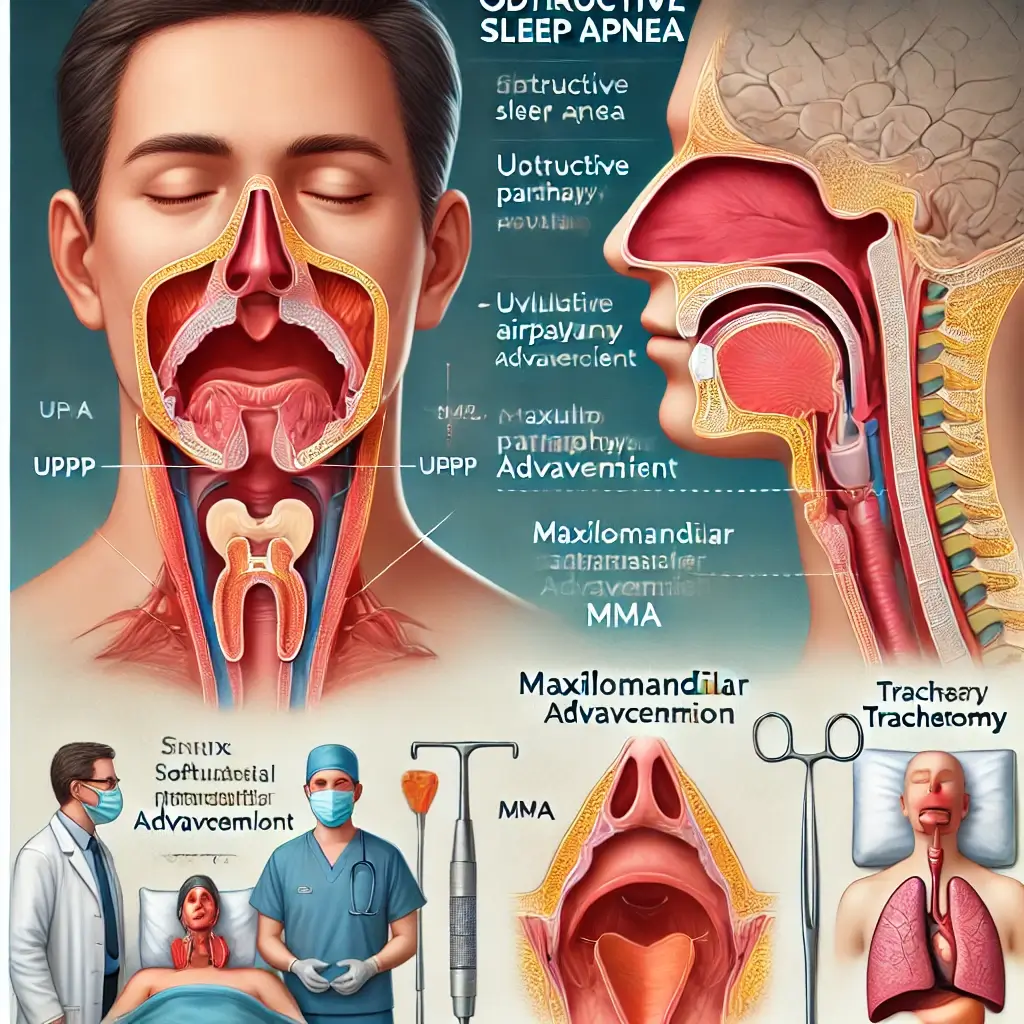Understanding Your Sleep Apnea Surgery Options: From UPPP to Tracheostomy
Purpose of Sleep Apnea Surgery
The purpose of sleep apnea surgery is to provide a surgical treatment for obstructive sleep apnea.
Sleep Mechanism and OSA
During sleep, the muscles in the back of the pharynx relax and obstruct the airway, causing OSA, a sleep disorder.
Sleep Disruption Effects
This can result in recurrent cessation and resumption of respiration, which can disrupt sleep and give rise to various health complications.
Sleep Apnea Statistics
The National Sleep Foundation estimates that approximately 18 million adults in the United States suffer from sleep apnea. Approximately 2 million of these adults suffer from severe sleep apnea amenable to surgical intervention.
Surgery Prevalence
Uncertainty surrounds the annual incidence of sleep apnea surgery, but an approximation places the number in the tens of thousands. It is anticipated that the prevalence of sleep apnea surgery will rise in the coming years, due to the increasing number of patients diagnosed with the condition and the development of novel surgical techniques.
Common Surgical Procedures
Although numerous varieties of sleep apnea surgery exist, the following are the most prevalent:
UPPP Procedure
Uvulopalatopharyngoplasty (UPPP): Excess tissue from the pharynx, uvula, and soft palate is removed during UPPP. This aids in maintaining an open airway throughout sleep.
MMA Procedure
Maxillomandibular advancement (MMA): The upper and lower mandible are moved forward during MMA. This prevents the airway from constriction while the individual is asleep.
Tracheostomy Procedure
Tracheostomy: During this procedure, an incision is made in the patient’s neck to facilitate the insertion of a ventilation tube. Tracheostomy is typically reserved for patients with significant OSA who have failed alternative treatments.
Surgical Risks
Surgical treatment for sleep apnea is a significant procedure that entails certain dangers, including infection, nerve damage, and bleeding. However, it has the potential to enhance quality of life and serve as an effective treatment for OSA.
Medical Consultation
When contemplating sleep apnea surgery, it is critical to consult with your physician regarding the procedure’s potential risks and benefits. They can assist you in determining whether or not surgery is your best option.
Advantages of Surgery
The following are several advantages of sleep apnea surgery:
It has the potential to enhance the quality of sleep and diminish daytime lethargy.
It has the potential to mitigate the likelihood of health complications linked to sleep apnea, including hypertension, cardiovascular disease, and cerebrovascular accidents.
It may enhance one’s quality of life.
Associated Risks
However, sleep apnea surgery is not without its associated risks:
Thrombosis Infection
Nerve impairment
Soreness Impairs digestion
Voice modification Requires additional surgery
Final Consultation Note
When contemplating sleep apnea surgery, it is critical to consult with your physician regarding the procedure’s potential risks and benefits. They can assist you in determining whether or not surgery is your best option.













